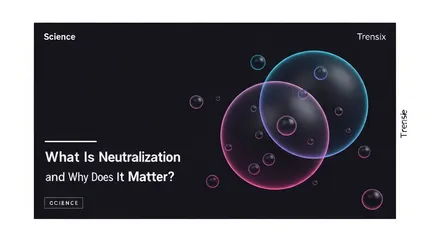Science
What Is Neutralization and Why Does It Matter?

Discover the chemical reaction of neutralization, where acids and bases react, and its crucial applications in our daily lives and the environment.
What is it?
Neutralization is a fundamental chemical reaction where an acid and a base react with each other to produce salt and water. During this process, the hydrogen ions (H+) from the acid combine with the hydroxide ions (OH-) from the base to form water (H₂O). The remaining ions from the acid and base join to form a salt. This reaction causes the resulting solution to become "neutral," meaning it is neither acidic nor basic, typically bringing its pH value closer to 7. Neutralization is a quantitative and often exothermic reaction, meaning it releases heat.
Why is it trending?
While a core concept in chemistry, neutralization is continuously trending due to its critical role in solving modern environmental and industrial challenges. It is a cornerstone of wastewater treatment, where harmful acidic or alkaline effluents are neutralized before being safely released into the environment. In agriculture, neutralization is key to managing soil pH, allowing farmers to adjust acidic or alkaline soil to optimize crop growth. Furthermore, it is essential in pollution control, such as treating acidic gases from power plants to prevent acid rain.
How does it affect people?
Neutralization reactions have a significant and direct impact on daily life. Many people use antacids, which contain weak bases like magnesium hydroxide, to neutralize excess stomach acid and relieve heartburn or indigestion. Toothpaste is typically alkaline to neutralize acids produced by bacteria in the mouth, helping to prevent tooth decay. Even simple home remedies rely on this principle, such as applying basic baking soda to an acidic bee sting to reduce pain and swelling. These applications highlight how essential neutralization is for health, hygiene, and food production.